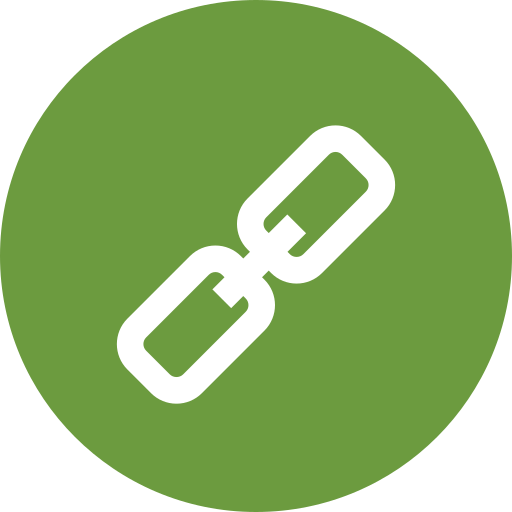| Product name | Per Pill | Savings | Per Pack | Order |
|---|---|---|---|---|
| 30 pills | $2.03 | $60.92 | ADD TO CART | |
| 60 pills | $1.91 | $7.31 | $121.84 $114.53 | ADD TO CART |
| 90 pills | $1.87 | $14.62 | $182.76 $168.14 | ADD TO CART |
| 120 pills | $1.85 | $21.93 | $243.68 $221.75 | ADD TO CART |
| 180 pills | $1.83 | $36.55 | $365.53 $328.98 | ADD TO CART |
| Product name | Per Pill | Savings | Per Pack | Order |
|---|---|---|---|---|
| 30 pills | $1.64 | $49.25 | ADD TO CART | |
| 60 pills | $1.50 | $8.27 | $98.49 $90.22 | ADD TO CART |
| 90 pills | $1.46 | $16.55 | $147.75 $131.20 | ADD TO CART |
| 120 pills | $1.43 | $24.82 | $196.99 $172.17 | ADD TO CART |
| 180 pills | $1.41 | $41.37 | $295.49 $254.12 | ADD TO CART |
Minomycin, also known as minocycline, is a broad-spectrum antibiotic used to treat various bacterial infections, including acne, respiratory tract infections, and skin infections. It is available in two strengths: 50 mg and 100 mg. In this article, we will provide a comprehensive guide on how to buy and use Minomycin, including its benefits, side effects, and dosage instructions.
What is Minomycin?
Minomycin is a semi-synthetic derivative of tetracycline, a naturally occurring antibiotic. It works by inhibiting the growth of bacteria, ultimately leading to their death. Minomycin is effective against a wide range of bacteria, including Gram-positive and Gram-negative bacteria, as well as certain types of fungi.
Benefits of Minomycin
Minomycin has several benefits that make it a popular choice for treating bacterial infections. Some of these benefits include:
- Broad-spectrum activity: Minomycin is effective against a wide range of bacteria, making it a versatile antibiotic for treating various infections.
- Low cost: Compared to other antibiotics, Minomycin is relatively affordable, making it a cost-effective option for patients.
- Easy to use: Minomycin is available in oral and topical forms, making it easy to use and administer.
- Few side effects: Minomycin has a relatively low incidence of side effects, making it a safe choice for patients.
Side Effects of Minomycin
While Minomycin is generally well-tolerated, it can cause some side effects, including:
- Gastrointestinal upset: Nausea, vomiting, and diarrhea are common side effects of Minomycin.
- Allergic reactions: Some patients may experience allergic reactions, such as hives, itching, and difficulty breathing.
- Photosensitivity: Minomycin can cause photosensitivity, making patients more susceptible to sunburn.
Dosage Instructions
The dosage of Minomycin depends on the severity of the infection and the patient's age and weight. The following table provides a summary of the recommended dosages:
| Infection | Dosage |
|---|---|
| Acne | 50 mg twice daily |
| Respiratory tract infections | 100 mg twice daily |
| Skin infections | 100 mg twice daily |
How to Buy Minomycin
Minomycin is available for purchase online and in pharmacies. Patients can buy Minomycin with a prescription from their doctor. Some popular options for buying Minomycin include:
- Order Minomycin online: Patients can order Minomycin online from reputable pharmacies, such as buy Minomycin with a visa or buy Minomycin with a mastercard.
- Purchase Minomycin at a pharmacy: Patients can purchase Minomycin at a pharmacy with a prescription from their doctor.
- Buy generic Minomycin: Patients can buy generic Minomycin, which is a more affordable option than the brand-name version.
Cheap Minomycin Options
For patients who are looking for affordable options, there are several cheap Minomycin alternatives available. Some of these options include:
- Buy cheap Minomycin 50 mg: Patients can buy cheap Minomycin 50 mg online or at a pharmacy.
- Buy cheap Minomycin 100 mg: Patients can buy cheap Minomycin 100 mg online or at a pharmacy.
- Discount Minomycin: Patients can get a discount on Minomycin by using coupons or discount codes.
Minomycin 100 mg and 50 mg: What's the Difference?
Minomycin is available in two strengths: 50 mg and 100 mg. The main difference between the two strengths is the dosage and the severity of the infection being treated. The following list provides a summary of the differences:
- Minomycin 50 mg:
- Used to treat mild to moderate infections
- Dosage: 50 mg twice daily
- Side effects: Generally mild and well-tolerated
- Minomycin 100 mg:
- Used to treat moderate to severe infections
- Dosage: 100 mg twice daily
- Side effects: May be more severe than the 50 mg strength
Conclusion
Minomycin is a broad-spectrum antibiotic that is effective against a wide range of bacterial infections. It is available in two strengths: 50 mg and 100 mg. Patients can order Minomycin online or purchase it at a pharmacy with a prescription from their doctor. While Minomycin is generally well-tolerated, it can cause some side effects, including gastrointestinal upset and allergic reactions. Patients should follow the dosage instructions carefully and consult their doctor if they experience any side effects. With its low cost and ease of use, Minomycin is a popular choice for treating bacterial infections.
Recommendations
Based on the benefits and side effects of Minomycin, we recommend the following:
- Buy Minomycin with a visa: Patients can buy Minomycin with a visa online or at a pharmacy.
- Purchase Minomycin 100 mg: Patients can purchase Minomycin 100 mg online or at a pharmacy for moderate to severe infections.
- Buy generic Minomycin: Patients can buy generic Minomycin, which is a more affordable option than the brand-name version.
- Order Minomycin overnight delivery: Patients can order Minomycin overnight delivery for urgent infections.
By following these recommendations and consulting their doctor, patients can safely and effectively use Minomycin to treat their bacterial infections.
Infections are a common health issue that can affect anyone, regardless of age or lifestyle. They occur when a foreign organism, such as a bacteria, virus, or fungus, enters the body and causes harm. Infections can range from mild to severe and can affect various parts of the body, including the skin, respiratory tract, urinary tract, and digestive system. In this article, we will discuss the different types of infections, their causes, symptoms, and treatment options.
Types of Infections
There are several types of infections, including:
- Bacterial Infections: These are caused by bacteria, such as tuberculosis, pneumonia, and urinary tract infections.
- Viral Infections: These are caused by viruses, such as the common cold, flu, and HIV.
- Fungal Infections: These are caused by fungi, such as ringworm, athlete's foot, and yeast infections.
- Parasitic Infections: These are caused by parasites, such as malaria, toxoplasmosis, and hookworm.
Causes of Infections
Infections can be caused by a variety of factors, including:
- Poor Hygiene: Not washing hands regularly, not cleaning wounds properly, and not practicing good hygiene can lead to the spread of infections.
- Weakened Immune System: People with weakened immune systems, such as those with HIV or undergoing chemotherapy, are more susceptible to infections.
- Contaminated Food and Water: Consuming contaminated food and water can lead to infections, such as food poisoning and waterborne illnesses.
- Insect Bites: Insect bites, such as mosquito bites, can transmit diseases like malaria and dengue fever.
Symptoms of Infections
The symptoms of infections can vary depending on the type of infection and the affected area of the body. Common symptoms of infections include:
- Fever: A high temperature, usually above 100.4°F (38°C).
- Pain: Pain or discomfort in the affected area.
- Swelling: Redness and swelling of the affected area.
- Discharge: Thick, yellow, or green discharge from the affected area.
- Fatigue: Feeling tired or weak.
Treatment Options for Infections
The treatment of infections depends on the type of infection and its severity. Here are some common treatment options:
| Type of Infection | Treatment Options |
|---|---|
| Bacterial Infections | Antibiotics, such as penicillin and amoxicillin |
| Viral Infections | Antiviral medications, such as oseltamivir and zanamivir |
| Fungal Infections | Antifungal medications, such as fluconazole and itraconazole |
| Parasitic Infections | Antiparasitic medications, such as metronidazole and albendazole |
Some other treatment options for infections include:
- Rest and Hydration: Getting plenty of rest and staying hydrated can help the body recover from infections.
- Over-the-Counter Medications: Over-the-counter medications, such as pain relievers and antihistamines, can help alleviate symptoms of infections.
- Surgery: In some cases, surgery may be necessary to treat infections, such as abscesses or infected wounds.
Prevention of Infections
Preventing infections is always better than treating them. Here are some ways to prevent infections:
- Practice Good Hygiene: Wash hands regularly, especially after using the bathroom and before eating.
- Get Vaccinated: Get vaccinated against common infections, such as flu and pneumonia.
- Use Protective Gear: Use protective gear, such as gloves and masks, when interacting with people who have infections.
- Avoid Close Contact: Avoid close contact with people who have infections.
- Stay Healthy: Maintain a healthy lifestyle, including a balanced diet, regular exercise, and adequate sleep.
Some other ways to prevent infections include:
- Avoid Sharing Personal Items: Avoid sharing personal items, such as towels and utensils, to prevent the spread of infections.
- Clean and Disinfect Surfaces: Clean and disinfect surfaces regularly to prevent the spread of infections.
- Avoid Contaminated Food and Water: Avoid consuming contaminated food and water to prevent infections.
- Use Insect Repellent: Use insect repellent to prevent insect bites that can transmit diseases.
Complications of Infections
If left untreated, infections can lead to serious complications, including:
- Sepsis: A life-threatening condition that occurs when the body's response to an infection becomes uncontrolled.
- Organ Failure: Infections can cause organ failure, such as kidney or liver failure.
- Death: In severe cases, infections can be fatal.
Conclusion
Infections are a common health issue that can affect anyone. It is essential to understand the different types of infections, their causes, symptoms, and treatment options. By practicing good hygiene, getting vaccinated, and maintaining a healthy lifestyle, we can prevent infections and reduce the risk of complications. If you suspect you have an infection, it is crucial to seek medical attention promptly to prevent serious complications. Remember, treating certain infections requires a comprehensive approach that includes medication, rest, and hydration, as well as prevention strategies to avoid the spread of infections.
References
- Centers for Disease Control and Prevention. (2022). Infections.
- World Health Organization. (2022). Infections.
- Mayo Clinic. (2022). Infections: Symptoms, causes, and treatment.
Note: The references provided are for general information purposes only and are not intended to be used as a substitute for medical advice. If you suspect you have an infection, please consult a healthcare professional for proper diagnosis and treatment.
























